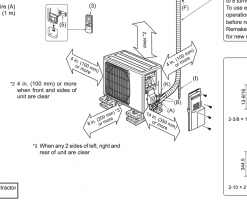phillier937
SAWHORSE
Can someone help me find a code reference (if any) that says these have to be anchored to the roof or is setting them on blocks OK?
Your premier resource for building code knowledge.
This forum remains free to the public thanks to the generous support of our Sawhorse Members and Corporate Sponsors. Their contributions help keep this community thriving and accessible.
Want enhanced access to expert discussions and exclusive features? Learn more about the benefits here.
Ready to upgrade? Log in and upgrade now.


RTUs are common. It is on the owner to assure that it is done properly. Placing mini-splits on a roof is a seemingly poor choice.% ~ % ~ %
If the mini-splits are fastened to the roofing assembly and actually
penetrate the roofing membrane, ...it will be an ongoing maintenance
issue to keep the penetrations sealed..........Plus the refrigerant lines
will also be penetrating the roofing assembly.
% ~ % ~ %
